Life After Lights-Out: Ten Adaptive Reuses for Lighthouses
Sunset at a lighthouse (photograph by Deb Nystrom)
They’re picturesque, they’re historic, they’re functional — they’re lighthouses. And in many places, thanks to changes in guidance technology like GPS units and sonar, they’re obsolete.
Often when a lighthouse is decommissioned, it gets put on the auction block in the hopes a private developer will turn it into… something. Some especially historic lighthouses end up in the hands of preservationists or non-profit foundations, hoping to restore the houses and keep the lights on, while others simply fall into ruin. But those need not be the only options. Here are ten “second careers” for lighthouses.
CASTLES
Dover Castle, St. Mary-In-Castro Church (photograph by Malcom Manners, via Flickr)
In the south of England, the grounds of Dover Castle include the remains of a lighthouse built by ancient Roman settlers. The pharos, or Roman lighthouse, was built in the first century AD. Dover offers the closest crossing between the United Kingdom and continental Europe, so Roman soldiers selected it as the site for a port, building a pair of pharos shortly after capturing the land from the Britons. Both were still standing nearly a thousand years later when William the Conqueror won the Battle of Hastings in 1066.
On his journey to Westminster Abbey to celebrate his coronation, William built up a series of fortifications along the English coast. When he reached Dover, one of the pair of ancient lighthouses was being used as the belfry for a Saxon church, but William incorporated the structure — lighthouse, church, and all — into the fortification which would become Dover Castle. (The other lighthouse stood until the 1700s.)
Dover Castle’s Roman Lighthouse (photograph by Oliver Mallich, via Flickr)
Extra stonework was added to the pharos in the 14th Century to strengthen the original structure and let it “blend in” with the other towers and battlements of the surrounding castle, but otherwise the original design was left intact. The pharos at Dover Castle is one of the few remaining examples of ancient Roman lighthouses still standing in the world today.
CHURCHES
The early Saxons who used Dover’s pharos weren’t the only ones to think of re-purposing a lighthouse as a church steeple. Collioure in the south of France, at the foot of the Pyrénées, began as a pair of villages — Port d’Aval to the south, and Port d’Amont to the north — divided by the Douy river, passing through on its way to the Gulf of Lyon.
Notre Dame Des Anges (photograph by Jean-Pierre Dalbèra, via Flickr)
In the Middle Ages, both towns were served by a single lighthouse stationed on a small peninsula at the mouth of the Douy. By the 17th century, however, the two towns had been united, and the medieval lighthouse replaced by a larger French fort. Instead of tearing down the older lighthouse, the citizens of Collioure built a church beside it – the Notre Dame des Anges — and incorporated the lighthouse as the church’s bell tower.
Coillioure lighthouse (photograph by Jean-Francois Renaud, via Flickr)
The Église Notre-Dame-des-Anges enjoyed a bit of celebrity in the 20th Century, when several painters from the Fauvist school — Henri Matisse and Georges Braque among them — made Collioure a favorite haunt. One of Matisse’s works, “View of Collioure (The Tower)” (1905), is a painting of the church and lighthouse itself.
MAUSOLEUM/COLUMBARIUM
From housing the prayerful, we move to housing the dead. Tillamook Rock Light was built on a remote rocky outcropping nearly two miles off the cost of Oregon, and suffered from such severe weather conditions and isolation that it earned the nickname “Terrible Tilly.”
Tillamook Ligthhouse viewed from the shore (photograph by OCVA)
Storms battered the lighthouse with such intensity that a gust once blew a 135-pound rock through the lighthouse’s kitchen window. Another storm even threw debris up to the lantern tower, destroying the light itself and severing the lighthouse’s radio contact with the mainland. Keepers eventually had to brick up most of the windows for safety’s sake, leaving only small peepholes; the building may have been safer, but the keepers were plunged into even greater isolation, and reports of depression and even madness among keepers were frequent.
After 76 years of service, Tillamook Rock Light was finally closed in 1957. Tillamook’s remote location and harsh weather posed a challenge to redevelopment, and the site lay abandoned for over 20 years.
Tillamook Lighthouse (photograph by David S. Ferry III)
Finally, in 1980, a pair of investors established the Eternity at Sea Columbarium, a repository for the ashes of the deceased at Tillamook Rock. Even the dead faced a difficult time at Terrible Tilly — storms continued to batter the structure, and the roof frequently leaked on the remains. The rock of the lighthouse is in a nationally protected wildlife area, which bars any human intervention during the spring and summer breeding season for various aquatic birds, so Eternity at Sea’s owners couldn’t even tend the remains consistently. Furthermore, the site was left exposed to vandals — who once broke in and stole an urn in 1991. Sea birds also sometimes broke in and nested inside.
Eternity at Sea finally lost its columbarium license in 1999, but 30 urns remain inside Tillamook Rock Light.
WILDLIFE REFUGE & OBSERVATION
The remoteness and exposure to wildlife posed a problem for Tillamook Rock Light, but other lighthouses have turned similar conditions to their advantage, as natural scientists have developed them into wildlife refuges and animal observatories.
Low Light Lighthouse was established in 1843 on the Isle of May, five miles off the cost of Fife in Scotland. Low Light was a smaller sister light to a main lighthouse, providing an extra warning against the dangerous North Carr reef just offshore. However, after 40 years, authorities chose to station a lightship by the North Carr reef instead to offer a more immediate warning, and Low Light went dark.
Low Light Bird Observatory (photograph by Jsutcliffe, via Flickr)
Then in 1934 a team of ornithologists took over Low Light, using it as housing while they visited the Isle of May to research Scotland’s sea birds. Low Light, now re-named the Isle of May Bird Observatory, is Scotland’s oldest bird observatory of this kind, and still hosts ornithologists to record data on flocks of puffins, passerines, and other birds during breading season. Occasionally researchers also come to study harbor seals and gray seals, which make their home on the Isle of May.
Seahorse Key Lighthouse (photograph by Hspauldi, via Flickr)
A similar facility is just off Florida’s coast, on tiny Seahorse Key Island. The Seahorse Key lighthouse was built in 1854 to serve Cedar Key, a trading post on the delta of the Suwannee River. After its decommission in 1915, the University of Florida purchased the Seahorse Key light in the 1950s and turned it into housing for researchers conducting studies of the fish species and ecosystem of the Gulf of Mexico. Seahorse Key also houses younger students enrolled in University of Florida high school outreach programs.
TIMEPIECES
Old Fort Lighthouse Clock Tower (photograph by Jorge Lascar, via Flickr)
Some lighthouses located near cities or towns have become clock towers; or may have always served double-duty as a timepiece, as with the Old Colombo Lighthouse in Colombo, Sri Lanka.
Erected in 1860, the Old Colombo Lighthouse boasted a clock made by the same manufacturer as Big Ben in London. As the city of Colombo grew, however, surrounding buildings blocked its light. In 1952, Colombo built a new lighthouse — but left the old lighthouse tower, and its clock, in place.
An Australian lighthouse became a slightly different timekeeping device: a time ball tower. The time ball was a time signaling system popular in the 19th century, used mainly by navigators on board ships. It consisted of a large wooden or metal ball on a mast erected on top of a tower; five minutes before 1 pm local time, the ball would be raised to the top of the pole, and then dropped precisely on the hour. Ships in the harbor would use it to synchronize their clocks.
Williamstown Lighthouse at Gellibrand Point just outside Melbourne, Australia, is the second oldest lighthouse in Victoria Province. Within ten years of its construction in 1852 it was replaced by a lightship stationed out in the harbor. Astronomers at the nearby Williamstown Observatory took it over and converted it into a time ball tower, controlling the ball’s rise and fall with a telegraph. They even devised a way to re-use the light as a second time signal in the evening — keepers dimmed the lights in the tower five minutes before 8 pm, and then turned them up again precisely at the hour.
Time Ball Tower in Williamstown (photograph by Alpha, via Flickr)
Williamstown’s lighthouse-turned-time ball operated until 1926, by which time better clocks and timekeeping systems made most time balls obsolete. However, further development in the city behind the harbor had begun to obscure the existing light signaling systems in Melbourne’s harbor. So the Williamstown time ball tower was turned back into a lighthouse in 1934, with different colored lights to stand out against the white city lights. It was finally decommissioned for good in 1987, but preserved as a historic monument; its time ball still drops daily right at 1 pm.
STUDIOS
Another popular post-career for lighthouses, particularly those with inspirational views, is as an artist’s studio.
Port Bickerton Lighthouse (photograph by Dennis Jarvis, via Flickr)
Port Bickerton lighthouse in Nova Scotia was taken out of service in the 1990s after almost a century of service. Today it is mainly open to the public as a monument and museum devoted to lighthouses in the region. However, the lighthouse keeper’s home has been set aside as a summer artist’s retreat.
Port Bickerton Lighthouse (photograph by Dennis Jarvis, via Flickr)
Port Bickerton’s artist-in-residence program gives artists in any medium a week or two to themselves in the keeper’s house, which features living quarters and a full studio in which to work. Participating artists are asked to offer some kind of public access at the end of their retreat — a lecture, an exhibition, or even just open house studio hours — but other than that they are left alone to wander the grounds, drawing inspiration from the nature trails and beaches surrounding the lighthouse, and to work in peace.
Utsira Lighthouse (photograph by Eirik Newth, via Flickr)
A similar artist-in-residence program operates out of Utsira Lighthouse in Rogaland, an island community in Norway. Utsira, built in 1844, is the highest lighthouse in Norway, sitting 78 meters above sea level. Spurn Point nature reserve in Yorkshire, England, also hosts artists in its own lighthouse, one of a pair erected in the 1850s (the other one is currently being converted into a visitors center for the reserve).
Former Northern Lighthouse Board Depot, Granton (photograph by John Lord, via Flickr)
Edinburgh offers a much less remote option for musicians in its Granton Lighthouse complex. Technically, the Granton facility wasn’t a lighthouse; it was a training and testing facility. But as lighthouses either went obsolete or switched to automated operations, the training facility went obsolete as well. Today, the Granton complex hosts the Depot, a series of rehearsal and recording studios for local musicians.
ART SPACES
In addition to artist studios, lighthouses have also become exhibition spaces — most interestingly for site-specific works.
The lighthouse in Maryport in the northwest of England dates to 1796. But for much of that time it was closed to the public, and was untended for years after switching to an automated operation system. Then in 2009, an English arts collective named Fold selected Maryport as a gallery space as part of its mission to bring contemporary art to more rural English communities. Along with the gallery, they commissioned Irish-born composer Ailís Ni Ríain to compose an original piece of music for the inside of the tower itself; Ni Ríain’s “Lighthouse Lullaby” uses voice and guitar, but leaves space within the composition to incorporate the natural creaks the lighthouse made itself.
Old Lighthouse, Maryport (photograph by Alexander P Kapp)
Fold’s festival only ran three days, however, and Fold disbanded shortly thereafter, so Maryport’s second life was short-lived. Recently there are rumors that Maryport’s lighthouse has been bought by a developer in Havasu, Arizona, who seeks to move it to a spot beside London’s Bridge.
A longer-lasting and more visual installation has taken residence at the Point of Ayr lighthouse on Talacre Beach in Wales. The Point of Ayr was built in 1776, and operated until the mid-1800s, when the community built a taller house. Visitors to Talacre Beach over the years would sometimes explore the abandoned lighthouse — but often left feeling vaguely uneasy.
“Keeper” at the Point of Ayr Lighthouse (photograph by Mat Fascione)
Rumors spread that Point of Ayr was haunted by a former keeper who’d died of a broken heart. Some even reported seeing a ghost pacing at the top of the tower. In 2010, Point of Ayr’s owner decided to capitalize on the rumors and commissioned artist Angela Smith to create a sculpture of the ghostly keeper. Smith’s life-size work, “The Keeper,” is a series of stainless-steel sea creature shapes, including fish, starfish, and clams, assembled onto the framework of a man. Gaps in between the shapes allow the wind to whistle through.
TRANSMISSION TOWERS
Early on, engineers saw the advantages of lighthouses as radio or telecommunications signal stations; they were often high enough to catch radio signals, and were kept unobstructed as well. While he was first developing long-distance radio transmission in the 1890s, Italian inventor Guglielmo Marconi used lighthouses as receiver points to test methods for communication between vessels at sea and radio receivers on land.
Dover Cliffs, South Foreland Lighthouse (photograph by Archgangel 12, via Flickr)
Marconi worked mainly in the South Foreland Lighthouse in Dover, and successfully completed the very first ship-to-shore transmission there in 1898. The first ship-to-shore distress call also came in to South Foreland the following year, in 1899, when a steamship ran aground. The South Foreland Light not only received the message, but relayed it by radio to a lifeboat station further up the shore. That same year, South Foreland received the very first international radio transmission from France.
Other countries soon followed suit, expanding or converting lighthouses into “Marconi stations.” A new station at the Pointe-au-Père lighthouse in Quebec, Canada, was completed in 1909, just in time to catch the distress call issued by the ocean liner RMS Empress of Ireland after she collided with a Norwegian coal freighter.
Pointe-au-Père Lighthouse (photograph by Dennis Jarvis, via Flickr)
The Empress of Ireland was badly damaged and sank after only 15 minutes, but the Pointe-au-Père received the message — including vital information as to the ship’s location — in time to dispatch rescue steamers within three minutes, saving 465 passengers.
POST OFFICE
By their very nature, lighthouses often need to be in some rather remote places, making them anchors for the small communities that spring up around them. Thus they sometimes get pressed into service for the people’s needs. In Fort Jupiter, Florida, this meant the lighthouse doubled as the post office.
Jupiter Inlet Lighthouse (photograph by Ed Schipul, via Flickr)
The first post office at the Jupiter Inlet Light opened in 1856 during the Third Seminole War, when Fort Jupiter was a military base. The post office closed only a few years later, but the lighthouse remained. Then in 1887, the keeper’s wife Mary Moore “Mollie” Carlin reopened the post office as her project while her husband Charles was at work.
Peggy’s Cove (photograph by Andrea Schaffer, via Flickr)
The post office at Peggy’s Point Lighthouse in Nova Scotia has a quainter origin. After the Second World War, the tiny harbor town of Peggy’s Cove enjoyed a surge in popularity from tourists drawn by the region’s beauty. Peggy’s Point Lighthouse became a major tourist attraction, and the town opened a seasonal post office inside the lighthouse to capitalize on it, offering visitors the chance to send postcards stamped with a lighthouse-shaped cancellation mark. However, the Canada Post grew concerned at the rate of mold growth in Peggy’s Point, and in 2009 shuttered the office permanently.
INNS
Turning lighthouses into inns or bed-and-breakfasts is a popular choice for entrepreneurs; some lighthouse-turned-innkeepers also cater to a more frugal clientele, and have turned their lighthouses into youth hostels. Notable options include the Smygehuk Lighthouse in Sweden, built in 1883, retired in 1975, and opened as a hotel in 2001. There is also Point Montara Light in Montara, California, which originally stood clear across the country, off Wellfleet, Massachusetts. When Wellfleet retired the light in the 1920s, the tower was moved west and became Point Montara’s lighthouse.
Rua Reidh Lighthouse (photograph by ms.akr, via Flickr)
There’s also Rua Reidh Lighthouse, near Loch Ewe in the north of Scotland. Rua Reidh’s lighthousekeeper’s quarters became a hostel in 1986 when the light was automated. The lighthouse itself is not open to the public, but a nearby heritage museum has the original workings on display. And then there’s Tibbets Point Lighthouse in Cape Vincent, New York, which sits where the St. Lawrence Seaway meets Lake Ontario, and is still in operation. Tibbets Point even retains its original Fresnel lens, installed back in 1854.
Tibbets Point Lighthouse (Doug Kerr, via Flickr)
In a sense, lighthouses are obsolete technology. But most lighthouses — especially the oldest — are striking and picturesque enough to spur people to preserve them instead of discarding or demolishing them, the way we would a VCR player or a rotary phone. Thousands of lighthouses still operate worldwide, but continue to be decommissioned each year — and hopefully many will go on to enjoy second lives.
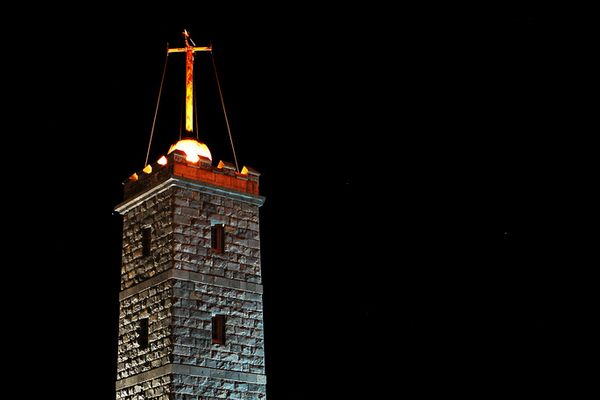
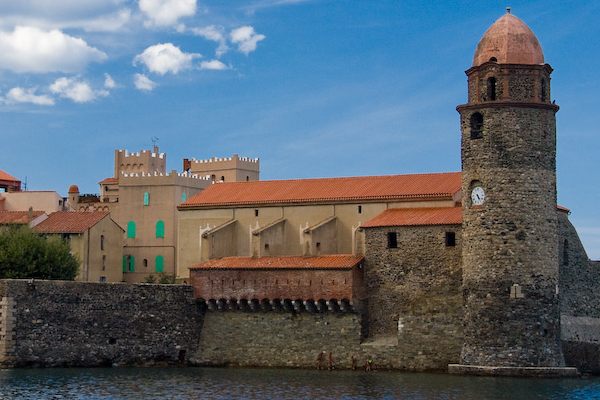
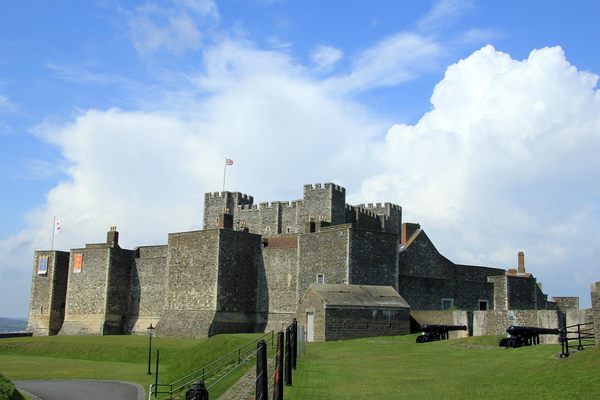

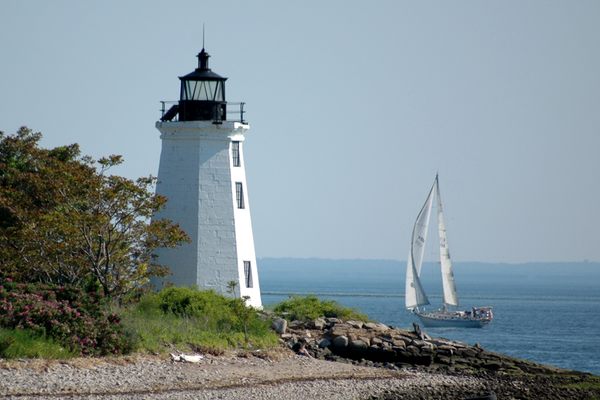

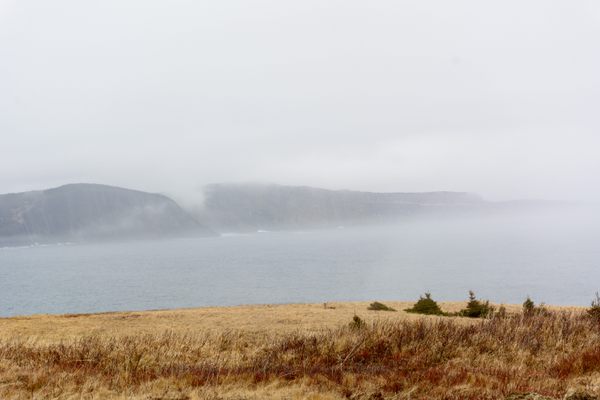





Follow us on Twitter to get the latest on the world's hidden wonders.
Like us on Facebook to get the latest on the world's hidden wonders.
Follow us on Twitter Like us on Facebook